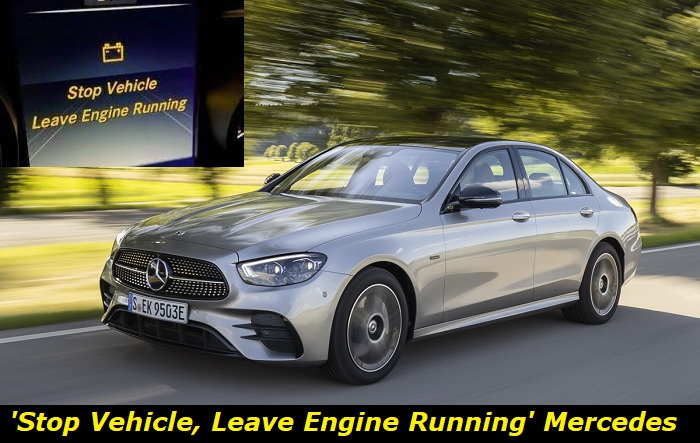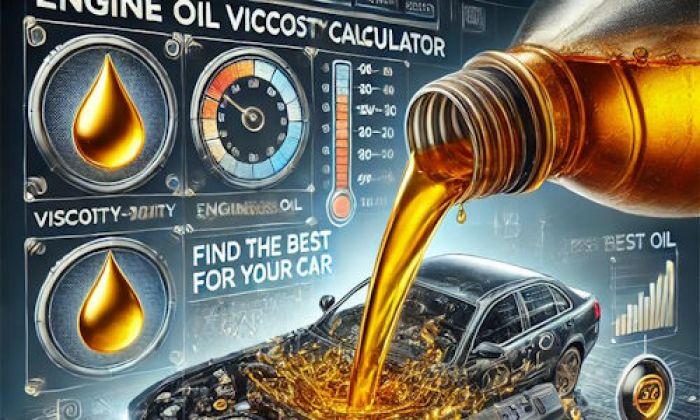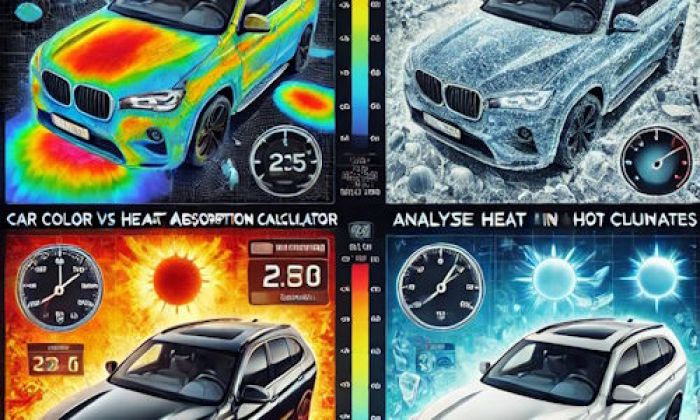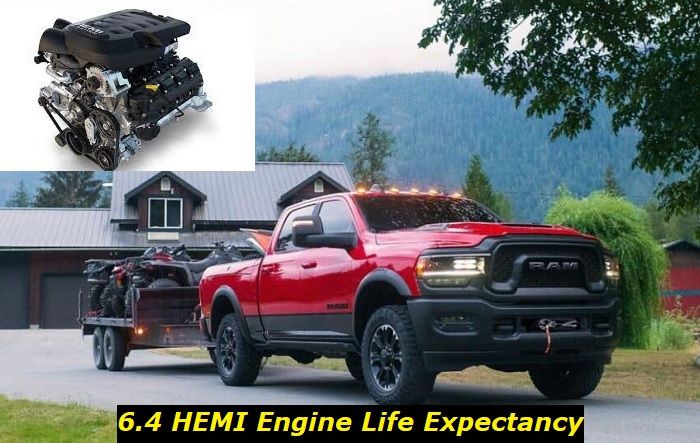If you drive a Mercedes-Benz, you might have come across the dashboard warning that says "Stop vehicle, leave engine running". This warning only appears on Mercedes vehicles, so many drivers are unfamiliar with it. If you haven't seen this message before, you might wonder what it means, and what to do about it.
The "Stop vehicle, leave engine running" message appears only on Mercedes-Benz vehicles with a model year later than 2015. This warning indicates that there's a problem with the vehicle's batteries. Usually, this means that one or both of the batteries are depleted or dead.
In this article, we'll discuss the steps you should take when you see this warning on your dashboard, and some ways to prevent this warning from coming up again.

What Does "Stop Vehicle, Leave Engine Running" Mean?
When this message appears, it means that the vehicle's battery is getting to a dangerously low level. It warns you to stop the vehicle so that the drain on the battery will be reduced. At the same time, it informs you to leave the engine running so the alternator can charge the car's battery.
While this message usually comes up as a result of a low battery, it could also point to other problems. In some cases, there could be a problem with the battery's charging system.
What Causes the "Stop Vehicle, Leave Engine Running" Message?
Fortunately, there aren't too many causes for the "Stop vehicle, leave engine running" message. When this happens, it points to a problem with the vehicle's power system, mainly the battery or part of its charging system.
The first thing to do is inspect the battery. Most times this issue is caused by a low or dead battery.
Here are some of the causes of the "Stop vehicle, leave engine running" warning.
1) Dead or Drained Battery
This is the most common reason for this message to appear. When a battery is dead or drained and no longer holds a charge, the car will display this message to alert the driver.
If the battery is drained, this issue is easily fixed by allowing the engine to idle and recharge the battery. If the battery is dead or faulty, it will need to be replaced with a new one.
2) Faulty Alternator
The car's battery is charged via the alternator. The alternator uses the energy generated by the engine to charge the battery and power the car's electrical components.
Some symptoms of a faulty alternator are:
- Difficulty Starting the Engine
- Smell of Burning Wires
- Whining Sound
- Malfunctioning Electronics
If you detect symptoms of a faulty alternator, you will probably need to have it replaced. Replacing an alternator is a complicated process, so it is best to have it done by a professional mechanic.
3) Faulty Wiring
Faulty wiring between the battery and the alternator can prevent the battery from charging. Faulty wiring can take the form of short circuits, burnt wires, or loose terminals.
If you have a wiring problem with the charging system, you will need to have it fixed by an automotive electrician.
4) Bad Voltage Regulator
The voltage regulator controls the voltage produced by the alternator. It prevents the alternator from overloading the battery and the other electrical systems in the car. If the voltage regulator fails, the alternator might not be able to charge the battery anymore. This will result in the "Stop vehicle, please leave engine running" message appearing on the center console.
A damaged voltage regulator will need to be replaced by a professional mechanic.
What Should I Do When "Stop Vehicle, Leave Engine Running" Appears?
When this message appears, the first thing to do is to stop the vehicle and leave the engine running. However, there are some other steps that you should take as well.
Here is what you should do when "Stop the vehicle, leave engine running" appears on your vehicle's center console.
- Carefully Stop the Car and Leave the Engine Running
When this warning appears, the best thing to do is follow what the message instructs you to do. Pull over and park the car as soon as it is safe to do so. Make sure to switch the gear to park.
By stopping the vehicle, you'll reduce the drain on the car's batteries. This allows the batteries to charge back up.
- Turn Off All Electronic Systems
Once the car is safely parked, make sure to turn off all electronics that consume the car's battery. Some of the systems that you'll want to turn off are the headlights, interior lights, and air conditioning. Make sure to disconnect any plugged-in devices. This reduces the drain on the car and allows the battery to charge quickly.
Make sure to keep the engine running.
- Allow the Engine to Idle for About 30 Minutes
Once you've turned off all unnecessary electronics in the car, make sure to allow the engine to run idle for about 30 minutes. This allows the batteries to charge up. After allowing the engines to idle for 30 minutes, you can begin to drive again.
However, if the car's alternator, voltage regulator, or wiring is faulty or damaged then this won't work. In this case, you'll need to get the car to a safe location and then have a mechanic repair or replace the damaged part.
How to Prevent "Stop Vehicle, Leave Engine Running" From Appearing Again
Having to stop your car because of this warning is a major inconvenience especially when you're in a hurry. To continue having a smooth, uninterrupted driving experience, you'll want to know how to prevent this warning from coming up again.
Since this message is usually caused by a low battery, the easiest way to prevent it from occurring again is to keep your battery well-charged.
Here are some things to do to keep your battery well-charged.
1) Don't Overuse the Car's Electronics
The electronics inside your car are powered by the battery. While the battery charges when the engine is running, using too many electronics at once will increase the demand on the battery and slow down the rate at which it charges.
When you use the car's electronics while the engine isn't running, they're powered directly by the battery. Depending on how many electronics you use and how long they run, this can severely drain or even deplete the batteries.
2) Prevent Unnecessary drain
After turning off your engine and parking your car, it is easy to forget to turn off certain systems in the vehicle. Accidentally leaving the cabin lights on, forgetting to turn off the headlights, or leaving the glove box open will drain the battery. If this happens, you could find yourself seeing the "Stop vehicle, leave engine running" message the next time you start up your car.
3) Avoid Taking Frequent Short Drives
Starting your car requires a lot of energy from the battery. If you drive for short periods, the alternator won't be able to restore the energy that was used to start the car. Doing this frequently results in the battery gradually losing its charge.
To prevent this, try to avoid using your car for only short trips.
4) Replace Your Battery if it is Old
If you notice that your battery is no longer keeping a charge for long periods, it is probably coming close to the end of its life. When this happens, you might find yourself receiving this error message more and more often. Make sure to replace an old battery before it starts to fail.
Can I Keep Driving When "Stop Vehicle, Leave Engine Running" Appears?
When this message appears, it means that the battery is very low. As long as the voltage regulator isn't damaged, you should be able to keep driving without causing further damage. However, it is not safe to keep driving in this condition because the battery could die and the engine could stall or turn off at any moment without warning.
When this message appears on your console, the safest course of action is to immediately slow down and safely pull off the road to allow your engine to run and charge the battery.
Conclusion
If you've driven a Mercedes vehicle for a long enough time, you are likely to have run into the "stop vehicle, leave engine running" message once or twice. This message indicates a problem with the car's battery or charging system. The most common cause is a depleted battery or a battery that can no longer hold a charge.
When you run into this problem, the first thing to do is safely slow down the car and pull over. Then switch the gear to park without stopping the engine. After that, allow the engine to idle for about 30 minutes. This will recharge the battery.
If this doesn't fix the issue, there might be a problem with another part of the car's charging system. This could be a faulty battery, a damaged voltage regulator, or a failed alternator. These issues will require replacements or repairs that will have to be done by a professional mechanic.
About the authors
The CarAraC research team is composed of seasoned auto mechanics and automotive industry professionals, including individuals with advanced degrees and certifications in their field. Our team members boast prestigious credentials, reflecting their extensive knowledge and skills. These qualifications include: IMI: Institute of the Motor Industry, ASE-Certified Master Automobile Technicians; Coventry University, Graduate of MA in Automotive Journalism; Politecnico di Torino, Italy, MS Automotive Engineering; Ss. Cyril and Methodius University in Skopje, Mechanical University in Skopje; TOC Automotive College; DHA Suffa University, Department of Mechanical Engineering






Add comment